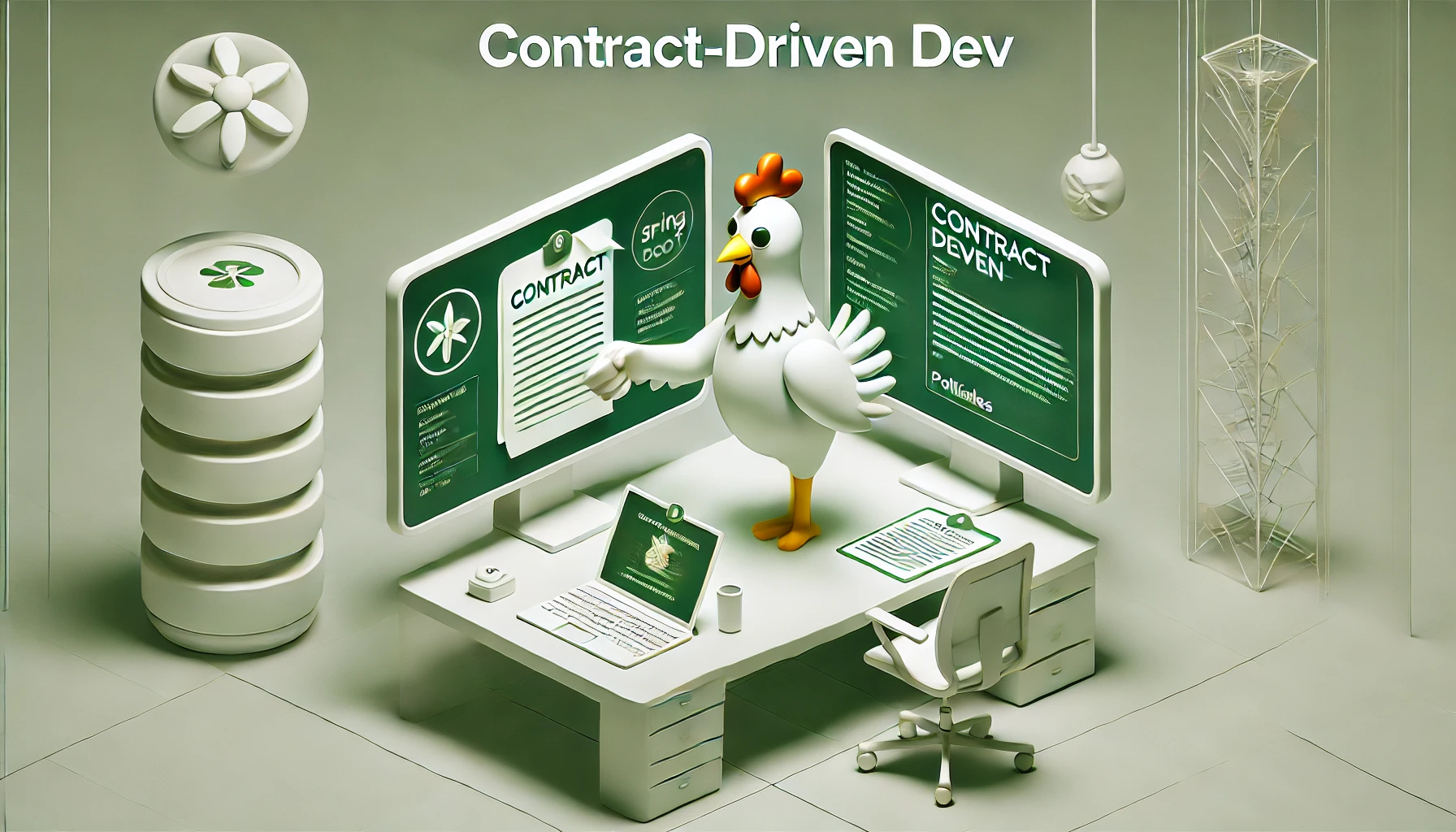Pollito's Opinion on Spring Boot Development 1: Contract-Driven Development
Posted on October 2, 2024 • 3 minutes • 567 words • Other languages: Español
Some context
This is the first part of the Spring Boot Development blog series.
- The objective of the series is to be a demonstration of how to consume and create an API following Design by Contract principles .
- The objective of this blog is to understand those principles.
Contract-Driven Development
In the Design by contract wikipedia article , we can find the following affirmation:
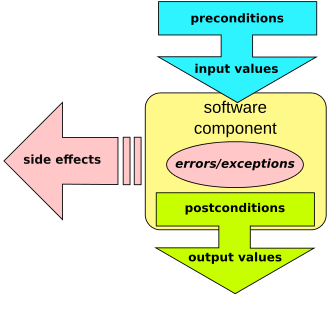
[…] software designers should define formal, precise and verifiable interface specifications for software components, which extend the ordinary definition of abstract data types with preconditions, postconditions and invariants.
From that, I made my own adaptation of the Contract-Driven Development philosophy for microservices architecture:
Microservices must comply with a contract, which defines inputs, outputs, and errors.
So, what is a contract?
Contract
Set of assertions containing the following information:
- Valid input values, and their meaning.
- Valid return values, and their meaning.
- Error values that can occur, and their meaning.
In a Contract there are two parties:
- Consumer: provides the input values and waits for the return.
- Provider: waits for the input values and provides the return.
There are no rules stating how many contracts a microservice complies with, or which roles it plays in them. But here are my personal recommendations to keep it as close as possible to the original definition:
- A microservice complies at least with one contract, playing the provider role.
- A microservice can play the consumer role in zero, one, or many contracts.
- A microservice can play the consumer role in zero, one, or many contracts.
Let’s go more in detail on each one.
- A microservice complies at least with one contract, playing the provider role
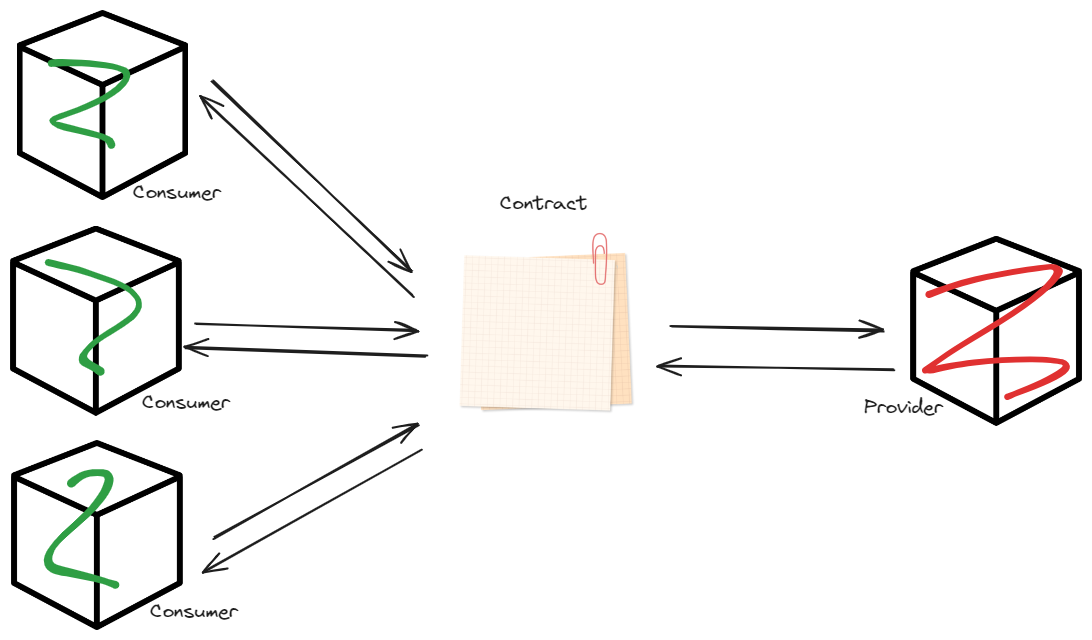
For a microservice that strictly follows the Contract-Driven development practices, without complying with this rule, it has no way of being invoked from outside sources.
Maybe there are scenarios when having a microservice running but not being able to be invoked is necessary, but at the moment of writing this, no scenario comes to mind.
- A microservice plays the provider role in one and only one of its contracts
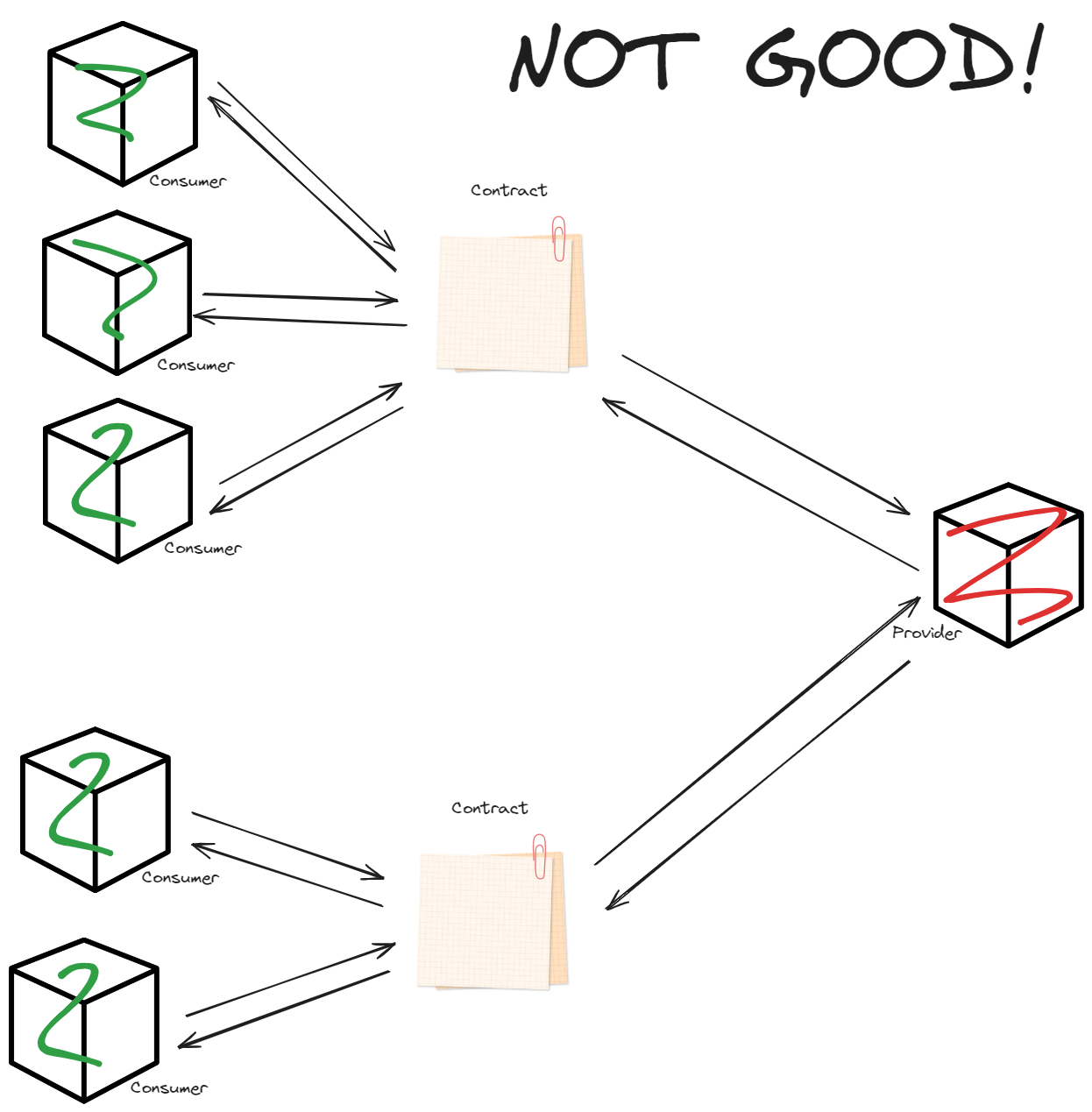
This isn’t really Contract-Driven Development, is more about the proper philosophy of microservices. A microservice is meant to deal with one thing only, and do it well. For achieving that, it just makes sense then that the microservice is only a provider once, providing the endpoints to interact with the one thing it does well.
There might be totally valid exceptions to this. A clear example is a microservice that expose an actuator endpoint. Now you have a microservice that does two things, its main function, and exposing a health check call. And that’s totally OK.
- A microservice can play the consumer role in zero, one, or many contracts.
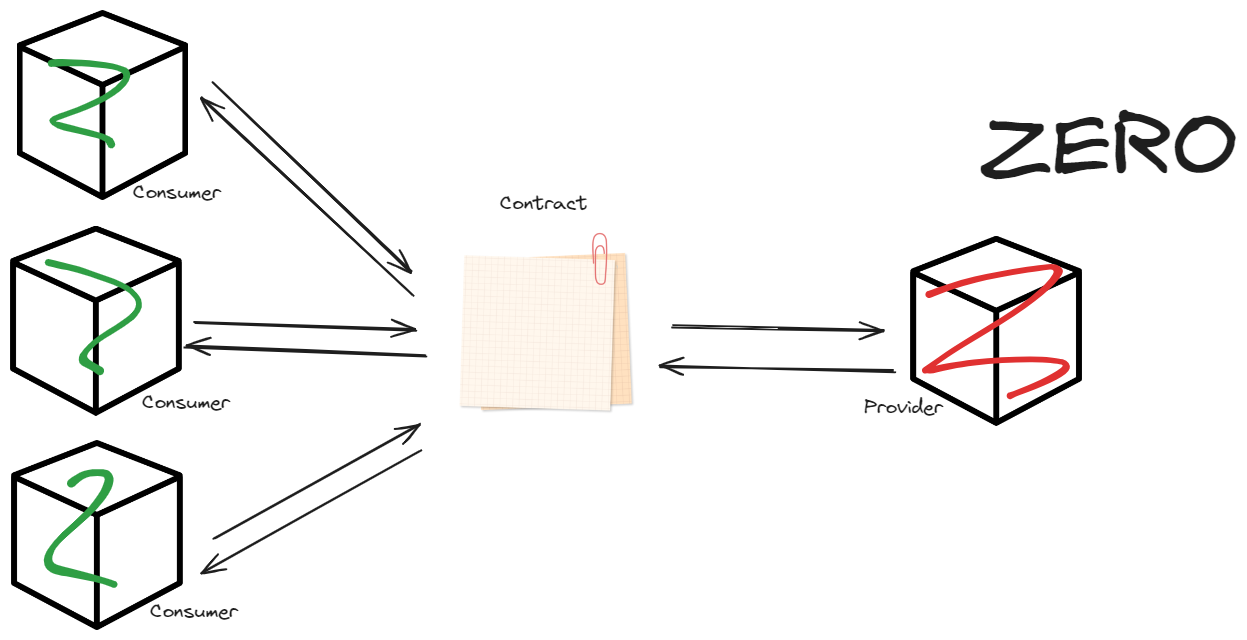


Conclusion
- Microservices must comply with a contract, which defines inputs, outputs, and errors.
- A contract is a set of assertions containing the following information:
- Valid input values, and their meaning.
- Valid return values, and their meaning.
- Error values that can occur, and their meaning.
- In a Contract there are two parties:
- Consumer: provides the input values and waits for the return.
- Provider: waits for the input values and provides the return.
- A microservice complies at least with one contract, playing the provider role.
- A microservice can play the consumer role in zero, one, or many contracts.
Next lecture
Pollito’s Opinion on Spring Boot Development 2: Best practices boilerplate

